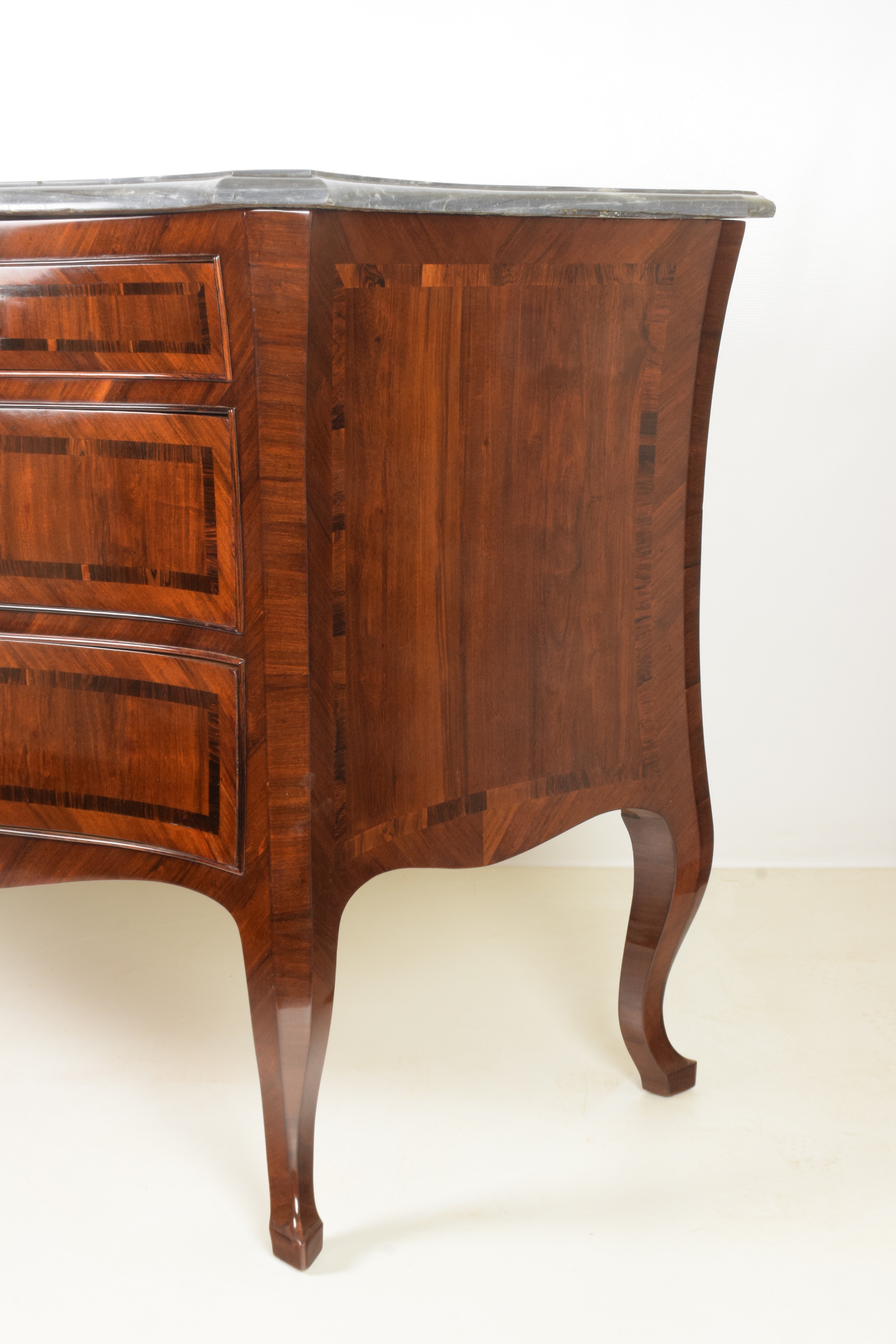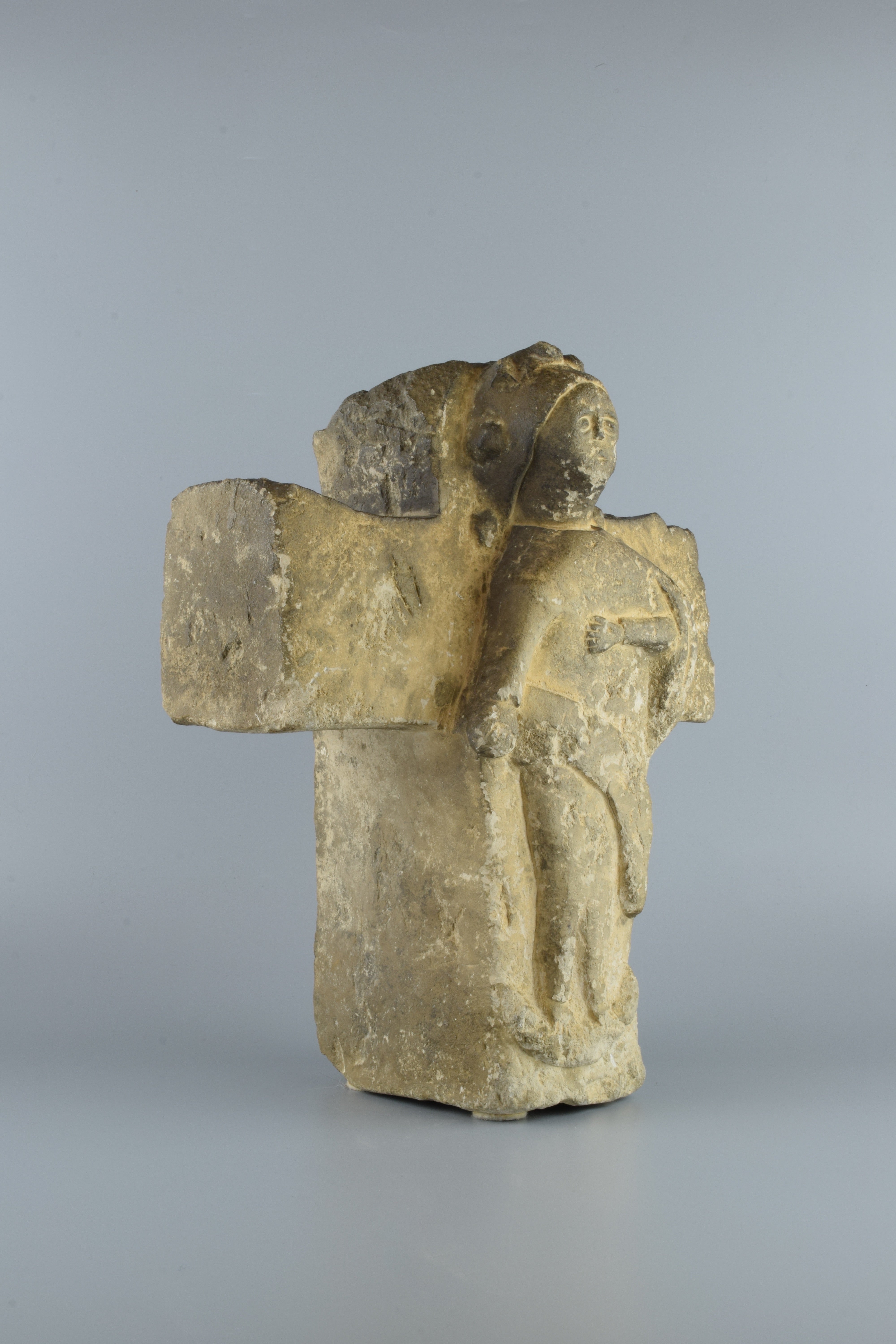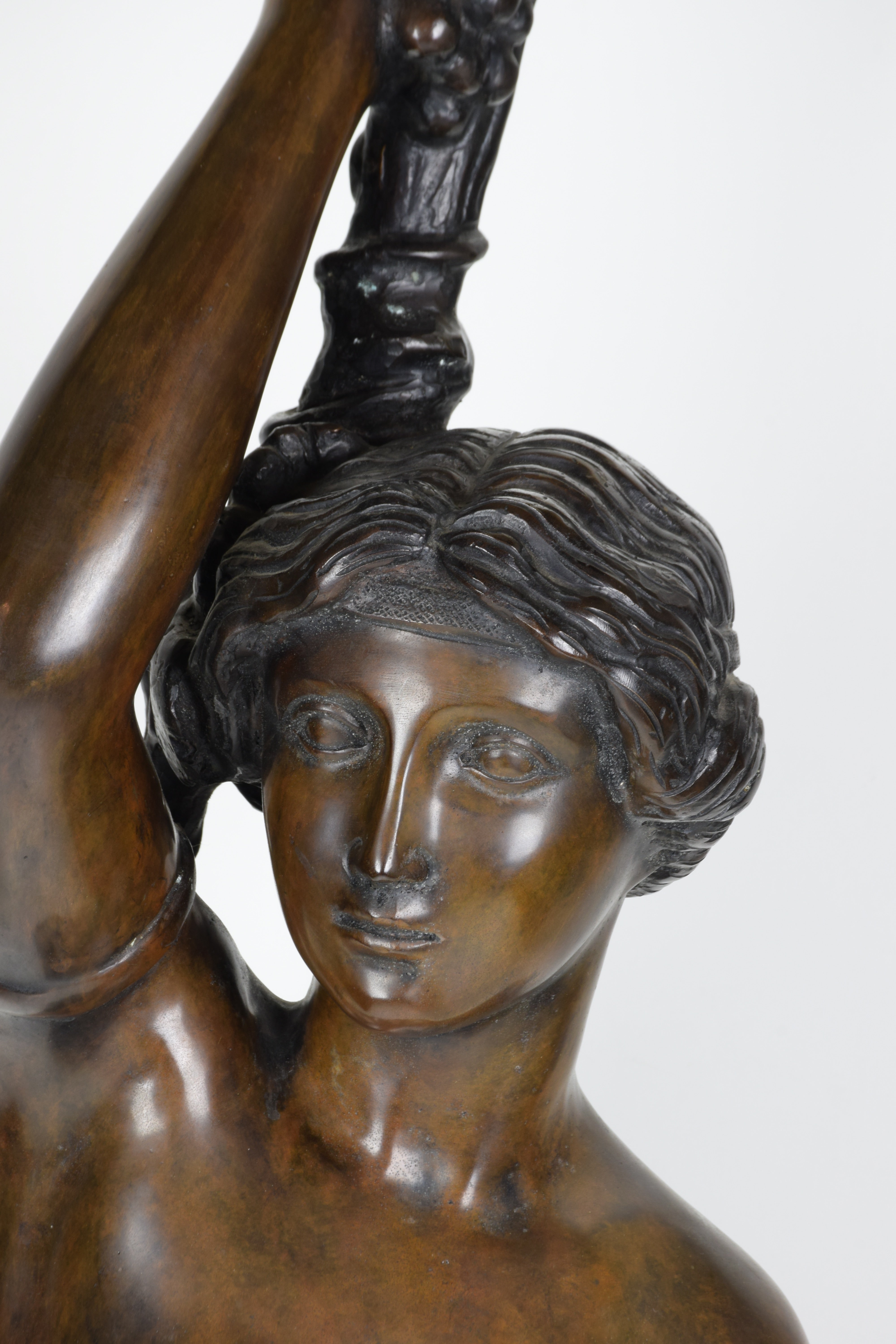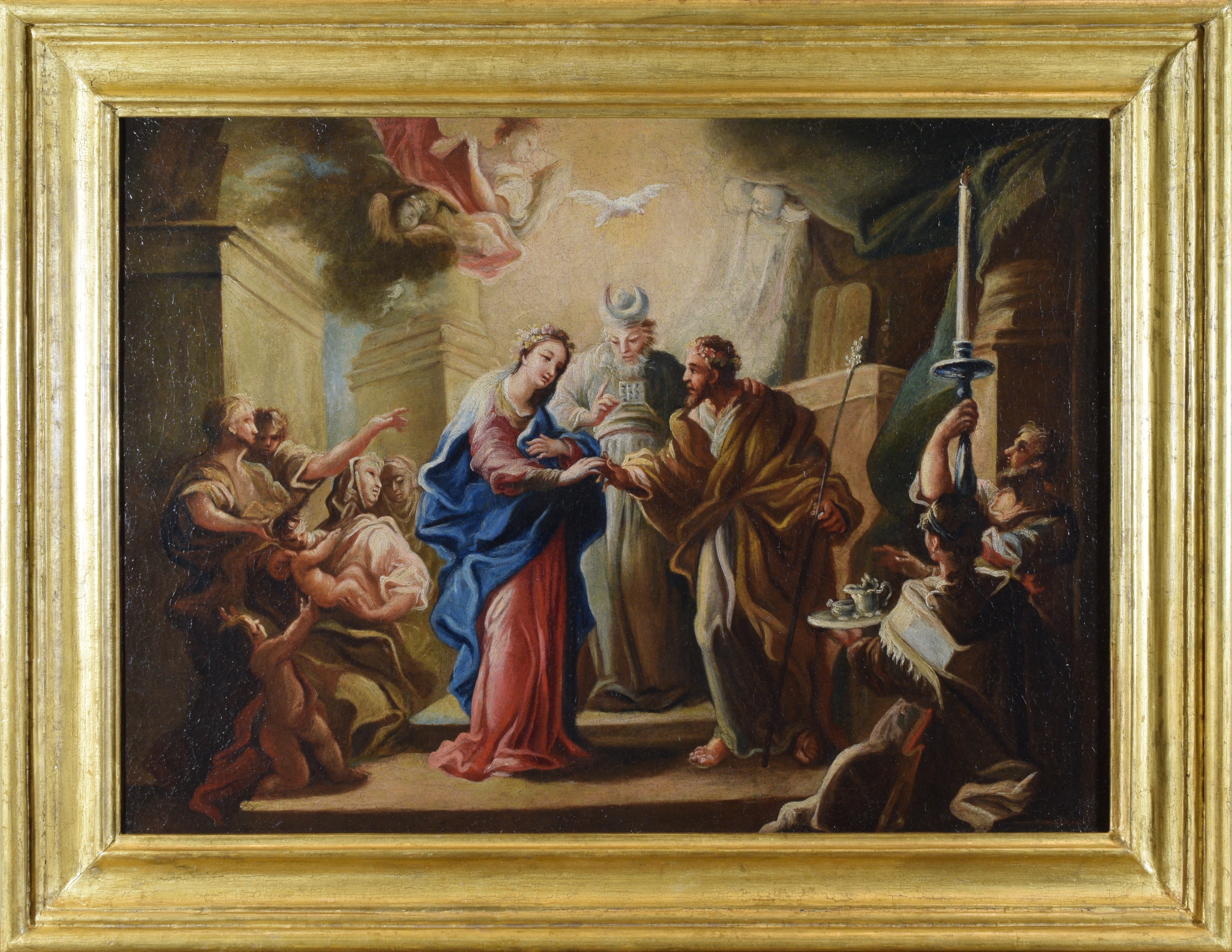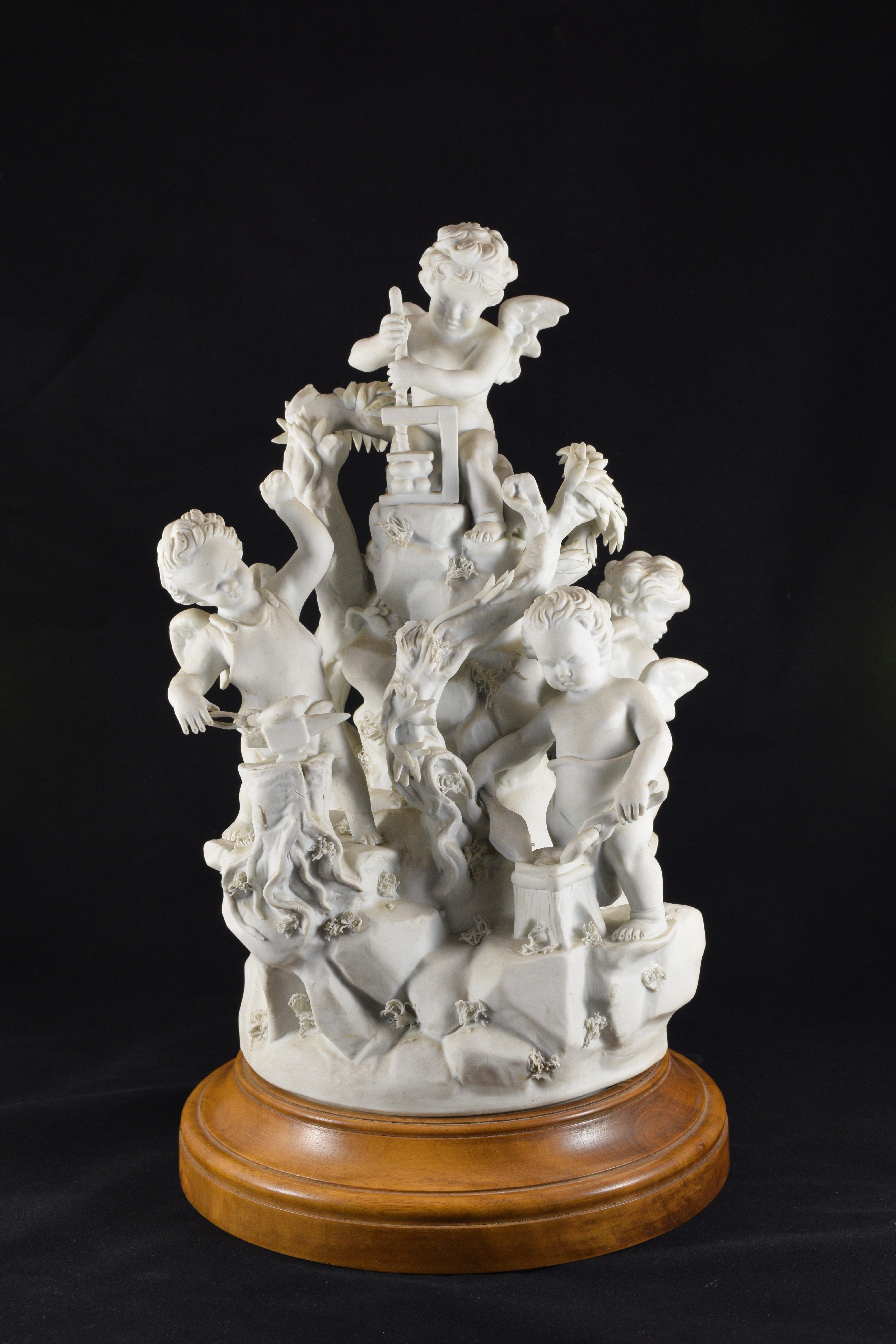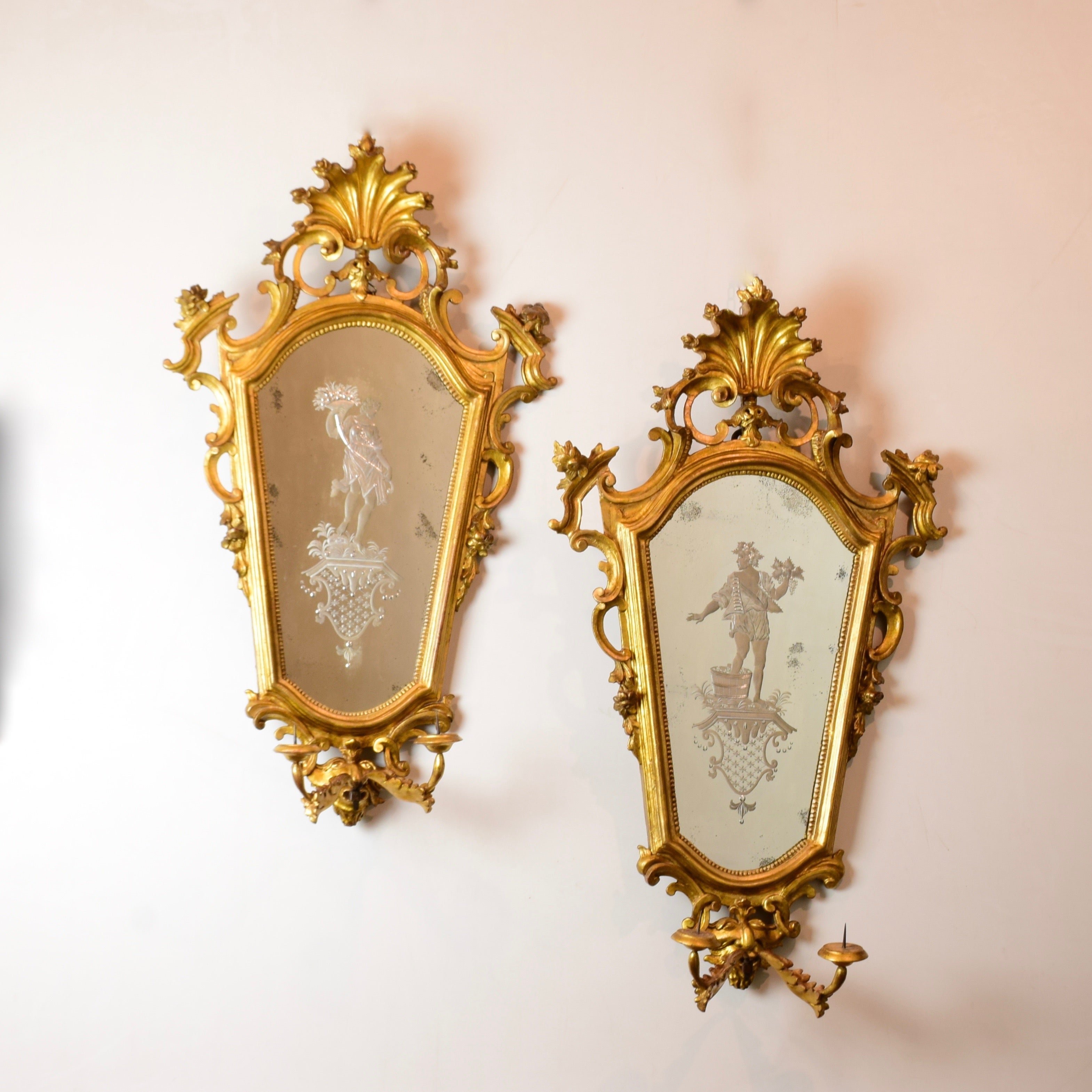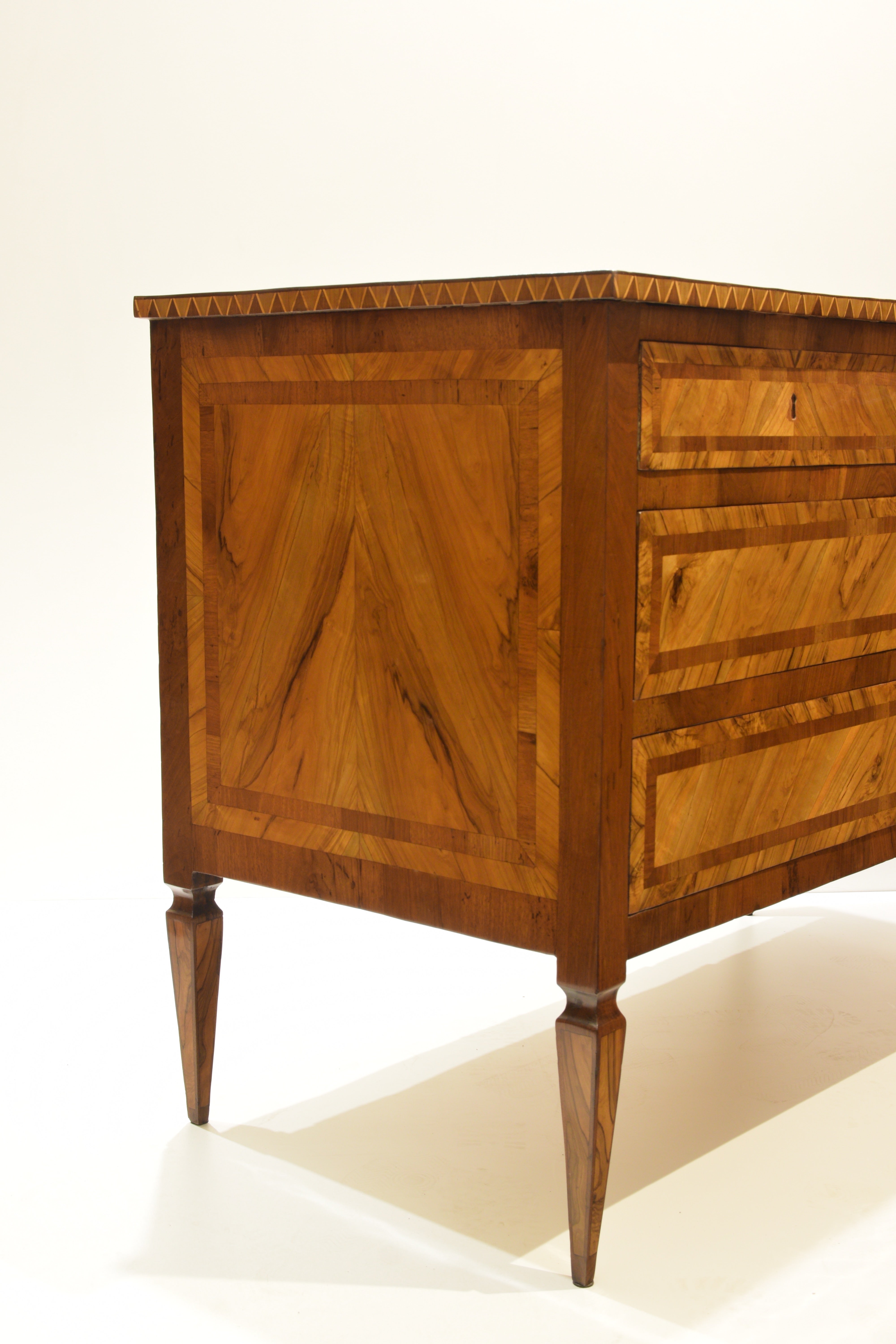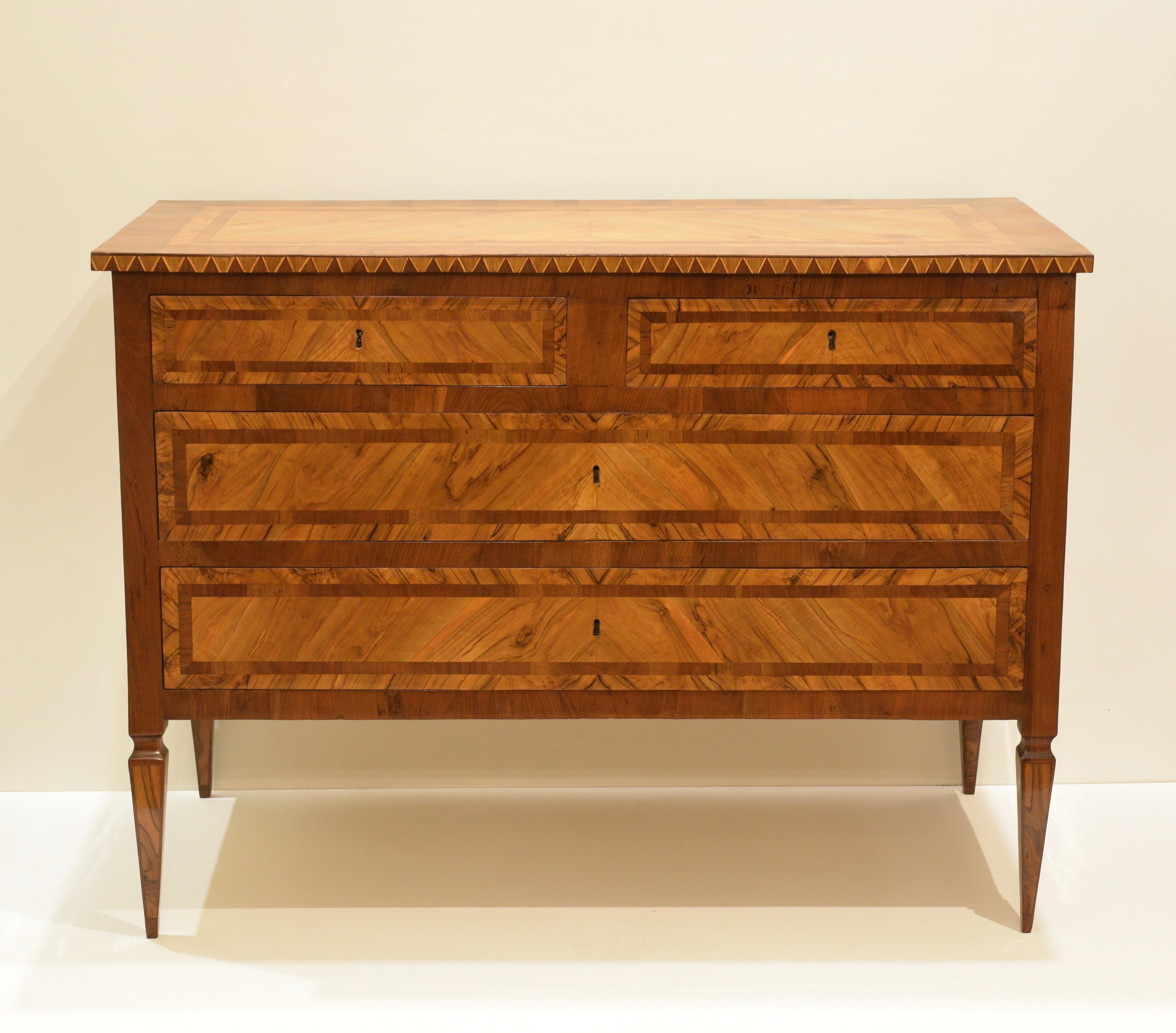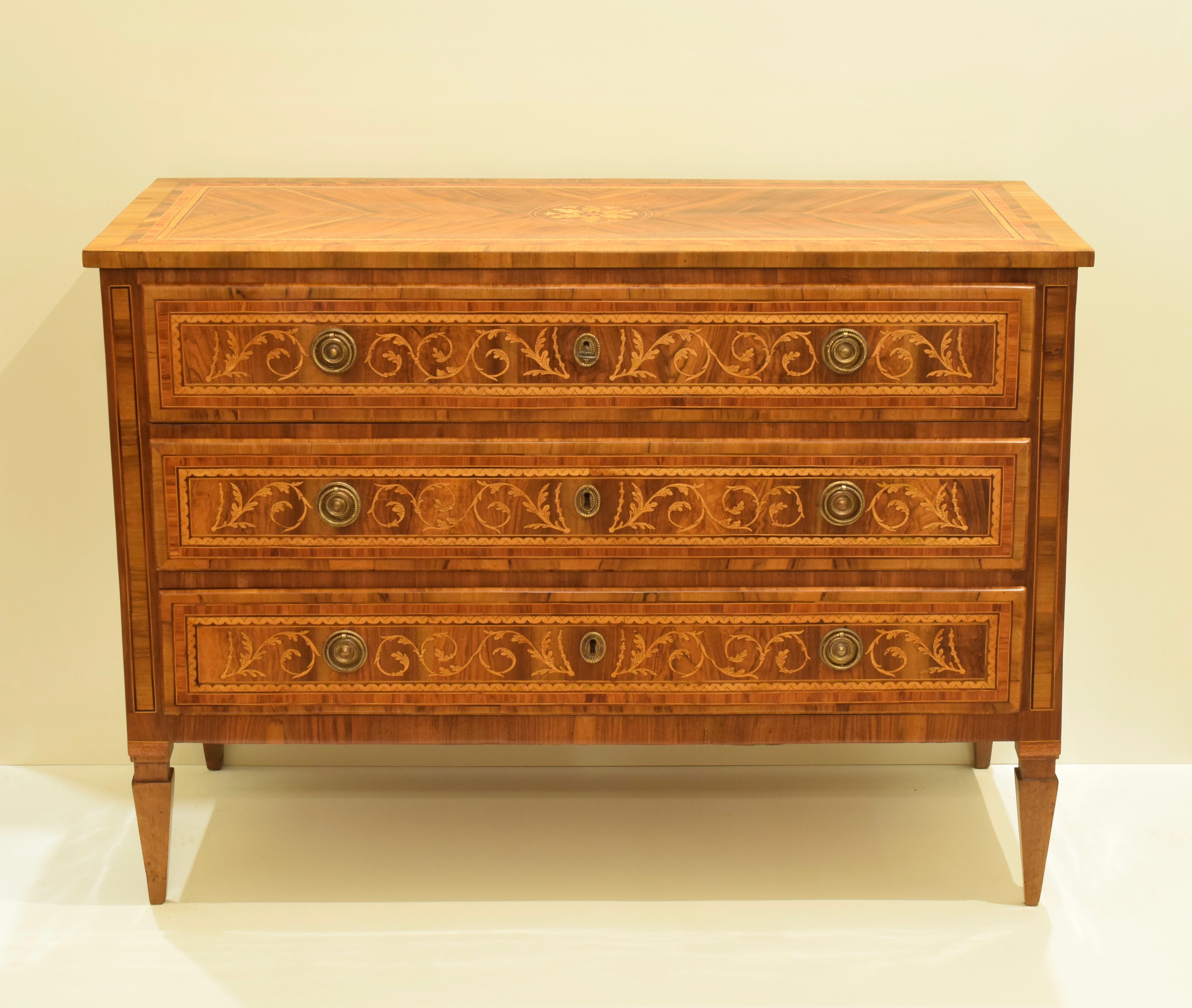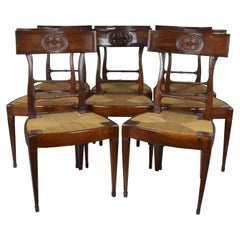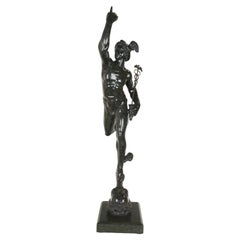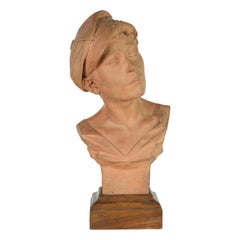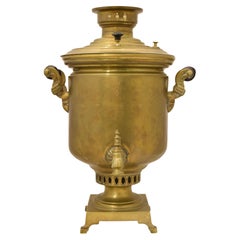About Antichità Marri
In 1965 Marri Tito began working as an antique furniture restorer in a small workshop in Florence in Borgo Pinti, taking advantage of the experience gained by working, for a few years, as an apprentice polisher "spirito e gommalacca" (alcohol and shellac). After the Florence flood in 1966 a very hard and demanding but at the same time unforgettable period began. The furniture that is entrusted to him for restoration are many but above all very damaged: strips detached and missing, pieces of inlay to be redone, furniture to be completely disassembled because dirty with sl...Read More

Established in 19651stDibs seller since 2021
Featured Pieces
Eight walnut Direttorio chairs, Tuscany, Lucca circa 1795
Located in Prato, IT
Eight walnut Direttorio Chairs with banded backs and floral pattern carving.
Paws with carved frames typical of Lucca.
Entirely hand-sewn straw seat.
Tuscany, late 18th century
Category
Antique Late 18th Century Italian Directoire Chairs
Materials
Walnut
Flying Mercury in green marble copied from the famous work of Giambologna
Located in Prato, IT
Green serpentine marble sculpture
Late 19th century
Height approx. 88 cm.
The flying mercury and the bronzes
While he was still busy working on the fountain in piazza Maggiore, the papal delegate Cesi asked Giambologna for a statue to be placed in the courtyard of the Archiginnasio, seat of the ancient and prestigious Bolognese university; he should have painted a bronze depicting the god Mercury with his index finger stretched towards the sky, a symbol of the divine origin of knowledge, which would have served as a warning to all students.
The project was never completed, but Giambologna elaborated a model preserved at the Civic Museum of Bologna, which is only the first of the numerous bronzes with the same subject made by the artist, defined precisely as flying Mercury. In later versions, the sculptor transformed Mercury into a much more dynamic figure reaching upwards, as if ready to take flight, giving it an unprecedented freedom of movement and lightness. When he returned to Florence, the sculptor certainly proposed it to the Medici, who enthusiastically immediately ordered one to be sent to Emperor Maximilian II of Habsburg, as a diplomatic gift for the ongoing negotiations of the wedding between Francesco and Giovanna, sister of the sovereign.
Giambologna replied with the two bronzes preserved in Vienna and Dresden and in 1580 cast the large Mercury now exhibited in the Bargello, originally intended for the loggia of the villa of Cardinal Ferdinando dei Medici to crown a fountain placed in the center of a magnificent decorative complex; the only variant with respect to the previous examples is constituted by the head of Zephyr placed under the foot of the god and from which a breath of wind blows it upwards, accentuating the sense of immateriality. In addition to the successful invention of the flying Mercury, Giambologna acquired immense fame by making numerous other bronzes for the Florentine collectors of the time; his first patron, Bernardo Vecchietti must certainly have owned many, given to him in part by the sculptor in exchange for his protection, but around the 1880s it can be said that there was no collector who did not aspire to own a work by Giambologna, especially those of small format.
The development of this trend in Florence is largely due to the artistic passions of the Grand Duke Francesco I, who with the creation of environments such as the Studiolo in Palazzo Vecchio and the Tribuna degli Uffizi, provided new criteria for the exhibition of the works, pushing all collectors to imitate his extraordinary collection. In the Studiolo, in addition to the painted tables that decorated the doors of the cupboards filled with all kinds of things, there were 8 niches containing bronze figures of divinities; Giambologna painted the one depicting Apollo (1573-75), with the characteristic serpentine pose and beautifully finished.
The placement of the statuette in the niche was no longer an impediment to the plurality of views as Giambologna endowed it with a sort of mechanism that allowed it to rotate. For the Tribune he instead created the six Labors of Hercules (1576-1589), small silver sculptures...
Category
Antique Late 19th Century Italian Figurative Sculptures
Materials
Marble
Vincenzo Rosignoli 'Assisi, 1856 - Firenze, 1920' Scugnizzo
By Vincenzo Rosignoli
Located in Prato, IT
He lived for many years in Florence, where he was a pupil of the sculptor augusto passaglia. He decorates numerous florentine buildings and creates various sculptures in tuscany and ...
Category
Antique Late 19th Century Italian Busts
Materials
Terracotta, Walnut
Russian Brass Samovar 19th Century Brass
Located in Prato, IT
Samovar with two side handles in ebanized turned wood
Very good condition
Russia
Early twentieth century
Height cm 57 Width cm 38
Weight 6 kg circa.
Category
Antique Late 19th Century Russian Serving Pieces
Materials
Brass
Italian Artisan Reproduction of the 1960s Game Table with 4 Chairs Wood Brass
Located in Prato, IT
Veneered in ebonized wood with gilded brass inserts.
Gilded bronze applications.
Fair condition: some scratches and small lacks
Dimensions: cm W 80 x D 80 x H 79.
Category
Vintage 1960s Italian Napoleon III Game Tables
Materials
Ormolu, Brass
Bronze Sculpture Signed Prof. Puntelli nude young girl
Located in Prato, IT
In dark patina bronze
Signed by Prof. Puntelli
Measures: Height 75 cm.
Category
Vintage 1910s Italian Figurative Sculptures
Materials
Bronze
Pair of Wrought Iron Sconces with Double Candle Holders Black, Late 19th Century
Located in Prato, IT
Firenze, Italy, late 19th century
Magnificent blacksmith work
Entirely forged and wrought by hand. No existing welds.
No electrical system
Dimensions: H 42 x W 39 x D 20 cm.
Category
Antique Late 19th Century Italian Wall Lights and Sconces
Materials
Iron
Pair of Italian Wrought Iron Andirons with Food Warmer Late 16th Century Black
Located in Prato, IT
Firenze, 16th century
Great craftsmanship typical of the Florentine Renaissance workforce.
These andirons come from a palace of the Florentine nobility and were used in the large f...
Category
Antique 16th Century Italian Andirons
Materials
Iron
16th Century Italian Armchair with Carved and Gilded Friezes, Firenze
Located in Prato, IT
Florence, late 16th century
Restored
New padding
Typical Renaissance Florentine "Seggiolone"
Dimensions: cm W66 x D63 x H140.
Category
Antique 16th Century Italian Renaissance Armchairs
Materials
Walnut
Carlo X Walnut Round Table, Italy, Toscana, Mid-19th Century
Located in Prato, IT
In finely hand carved three-legged solid walnut.
Small plate band covered with walnut veneer with frame.
Liguria, First half '800
Dimensions: Diameter 143 Height 78 cm circa.
Category
Antique Mid-19th Century Italian Charles X Center Tables
Materials
Walnut
Pair of China Yellow Background Vases with Dragons
Located in Prato, IT
China, 20th century.
Yellow background porcelain with dragon decorations
Height cm 55.
Category
20th Century Chinese Ceramics
Materials
Porcelain
19th Century Terracotta Bust of a Young Girl Signed by Andrea Flaibani
Located in Prato, IT
Andrea Flaibani Friulian sculptor (Udine, Italy 1846 - Udine, Italy 1897)
Terracotta
Measures: Height 38 cm
Width cm 23
Base diameter cm 15
Weight kg approx. 5.5.
As a young...
Category
Antique Late 19th Century Italian Neoclassical Busts
Materials
Terracotta
More About Antichità Marri
